:max_bytes(150000):strip_icc()/leaf_crossection-57bf24a83df78cc16e1f29fd.jpg)
Plant Leaves and Leaf Anatomy
A typical leaf consists of a lamina (the broad part of the leaf, also called the blade) and a petiole (the stalk that attaches the leaf to a stem). The arrangement of leaves on a stem, known as phyllotaxy, enables maximum exposure to sunlight. Each plant species has a characteristic leaf arrangement and form.

Biomedical Illustrator Medical & Biological Illustrations Laurie O’Keefe
Structure of a Succulent Leaf: A section through a succulent leaf with halophytic adaptations reveals the following structure (Fig. 622A): The epidermis is uniseriate made of compactly-arranged tabular cells with cuticularised outer walls. A row of palisade parenchyma occurs next to epidermis forming more or less a compact band.

Leaves Biology for Majors II
Q1. The stalk of leaf is called A. Sessile B. Plumule C. Stipule D. Petiole. Answers: Petiole is the stalk of a leaf that attaches the blade to the stem. In petiolate leaves, the leaf stalk is long. It is the structure through which products of photosynthesis are moved from leaves to the entire plant. So, the correct answer is 'Petiole' Q2.

Plant Leaf Cross Section
Figure 30.10.1 30.10. 1: Mesophyll: (a) (top) The central mesophyll is sandwiched between an upper and lower epidermis. The mesophyll has two layers: an upper palisade layer and a lower spongy layer. Stomata on the leaf underside allow gas exchange. A waxy cuticle covers all aerial surfaces of land plants to minimize water loss.
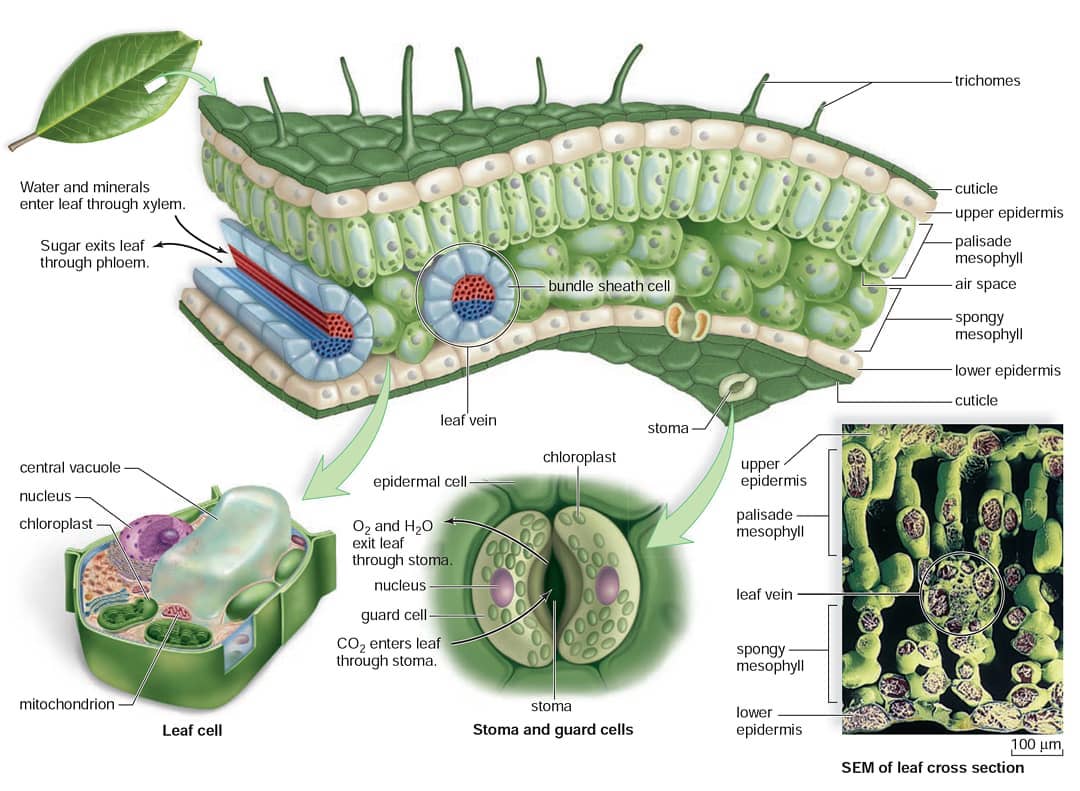
Structure of a leaf
Leaf parts and directional terms. Left: Diagram of a simple leaf showing the basic parts, including the petiole (stalk), lamina (blade), veins (strands of vascular tissue), margin (edge of the lamina), apex of the lamina, and base of the lamina.Right: Diagram of a leaf attached to a stem showing terms for directionality: adaxial (upper leaf surface), abaxial (lower leaf surface), proximal.
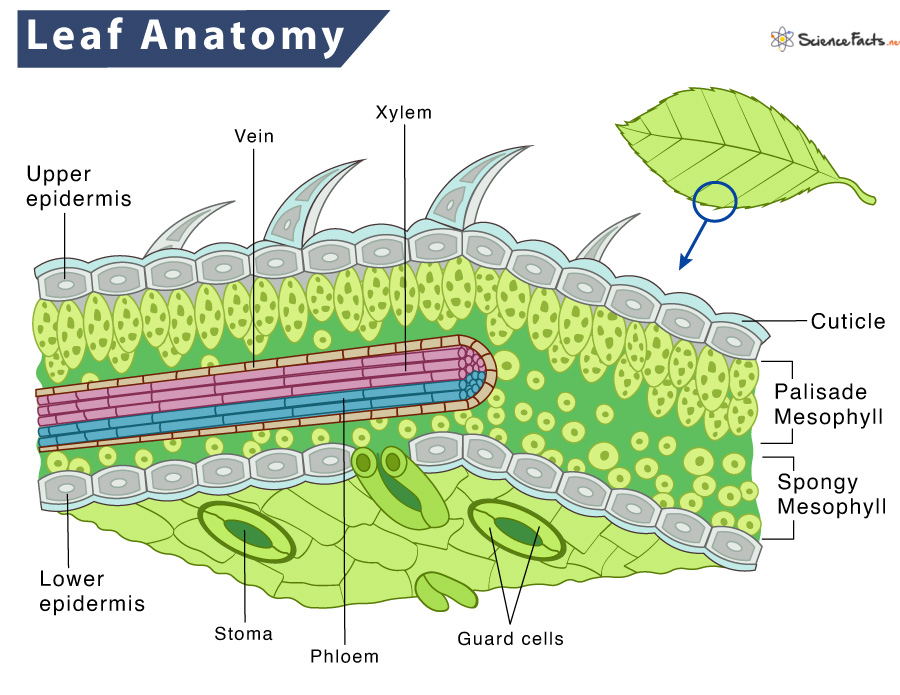
What Is The Structure And Function Of Leaves
The structure of the umbrella tree leaf is typical of leaves in general (Above left photo). It has an outer layer, the epidermis, which produces a waxy waterproof coating. The epidermis of the undersurface produces guard cells, which swell and shrink to close and open the pores (stomata) which control the loss of water vapor (transpiration) and.
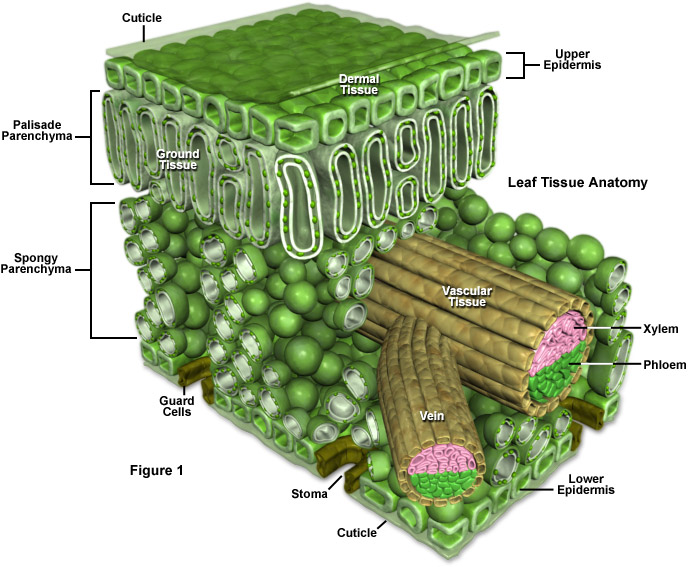
Molecular Expressions Cell Biology Plant Cell Structure Leaf Tissue Organization
A leaf is a compromise between two conflicting evolutionary pressures. The first is to expose a maximum photosynthetic surface to sunlight; the second is to conserve water while, at the same time, providing for the exchange of gases necessary for photosynthesis. The photosynthetic cells of leaves are of a general type known as parenchyma.

Leaf Structure Labeled Best Science Images and diagrams Pinterest Leaf structure and
A typical leaf shows three main parts: 1) petiole, 2) leaf base, and 3) leaf blade or lamina, each performing specific functions. Parts of a Leaf Diagram. 1. Petiole. It is the stalk that connects a leaf to the stem of the plant, it is made of complex conducting tissues called vascular tissues.

Leaf Structure and Photosynthesis YouTube
2. Sheathing Leaf Base: In many plants the leaf base expands into a sheath which partially or wholly clasps the stem. This sheathing leaf base is of frequent occurrence among monocotyledons. The sheathing leaf base encloses the stem for some distance above the node (Fig. 4 .2-C). Some important examples are Zea mays, sugarcane, wheat, banana etc.

Internal Structure of a Leaf DanicateMullen
Figure 9.3. 2: Cross section of a hydrophytic leaf. Observe a prepared slide of a hydrophyte, such as Nymphaea, commonly called a water lily. Note the thin epidermal layer and the absence of stomata in the lower epidermis. In the spongy mesophyll, there are large pockets where air can be trapped.
:max_bytes(150000):strip_icc()/parts_of_a_leaf-56abaed23df78cf772b5625a.jpg)
Plant Leaves and Leaf Anatomy
Leaf Structure and Function Factories for Photosynthesis. A leaf is a highly organized factory - an organ constructed of several kinds of specialized tissues, each of which has its own duties.. of nutrients such as nitrogen from sunlight damage as they are relocated to other parts of the plant before the leaf is lost. This diagram also.
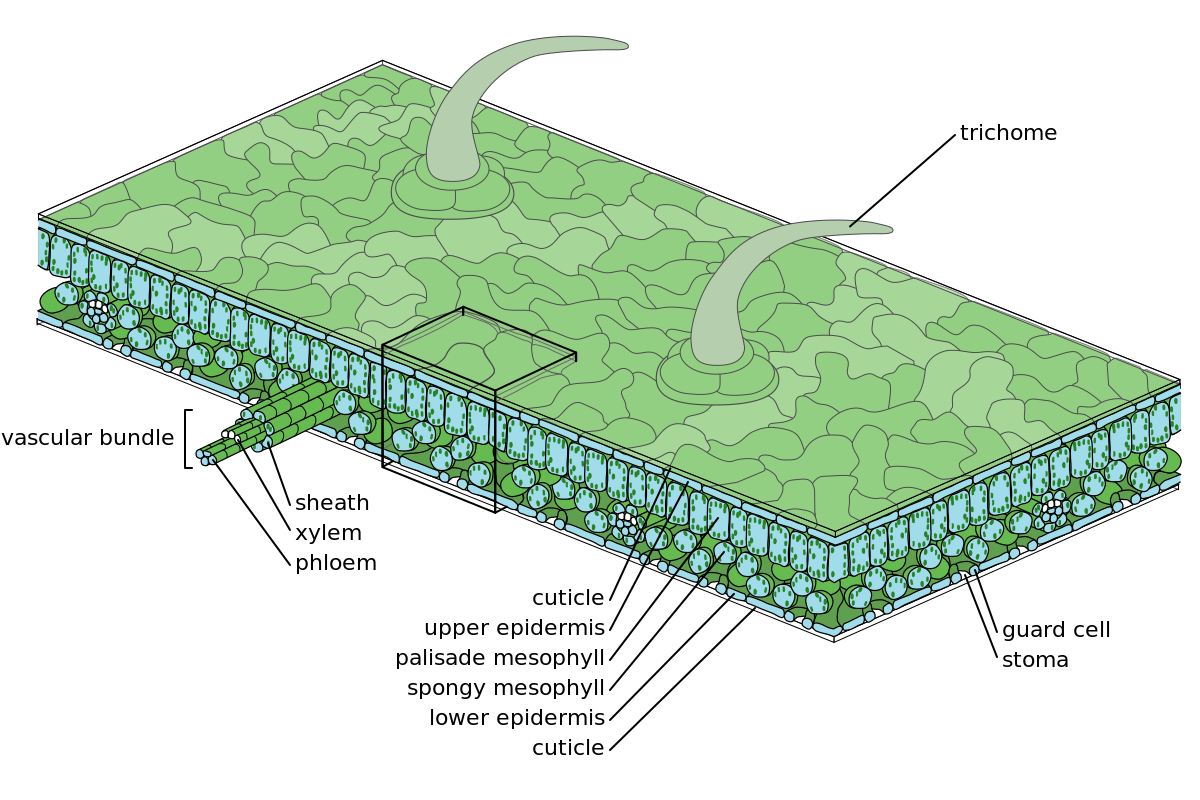
FileLeaf Structure.svg Wikipedia
The petiole is a stem that attaches the leaf blade to the main stem of the plant. As plants have radiated, diversified, and adapted to different environments, you'll see that there are many variations on this theme. The photo on the left is a palmate leaf, the diagram on the right is a pinnate leaf. Photo by Maria Morrow, CC-BY 4.0. Diagram on.
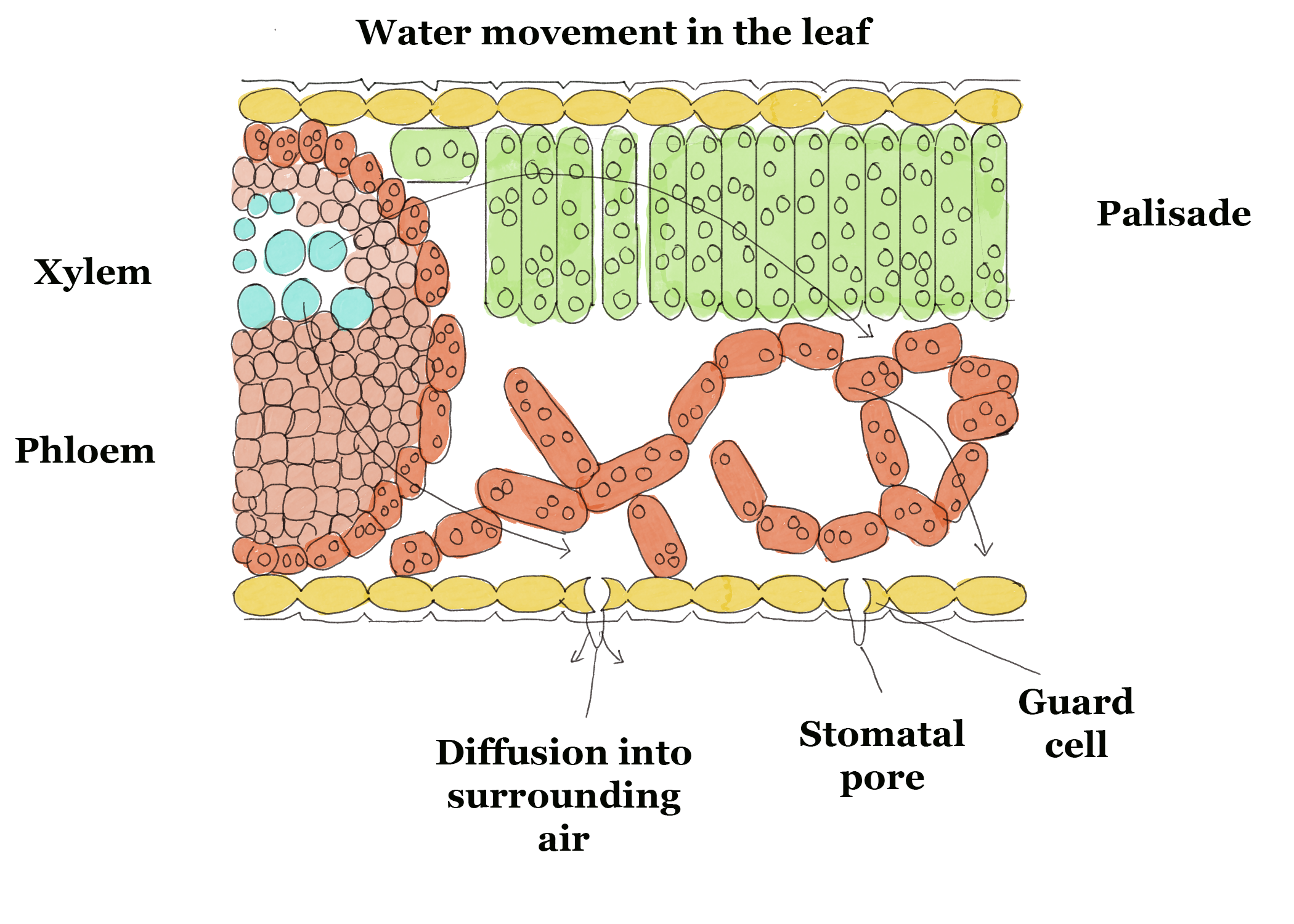
Leaf Structure, Types, Functions GCSE Biology Revision
The structure of a leaf is described below in detail : Parts of a Leaf. Generally, leaf base, petiole, and lamina, together form the main parts of a leaf. Leaf Base: This is the part where a leaf attaches to the stem. Leaf base has two small leaf-like structure called stipules.
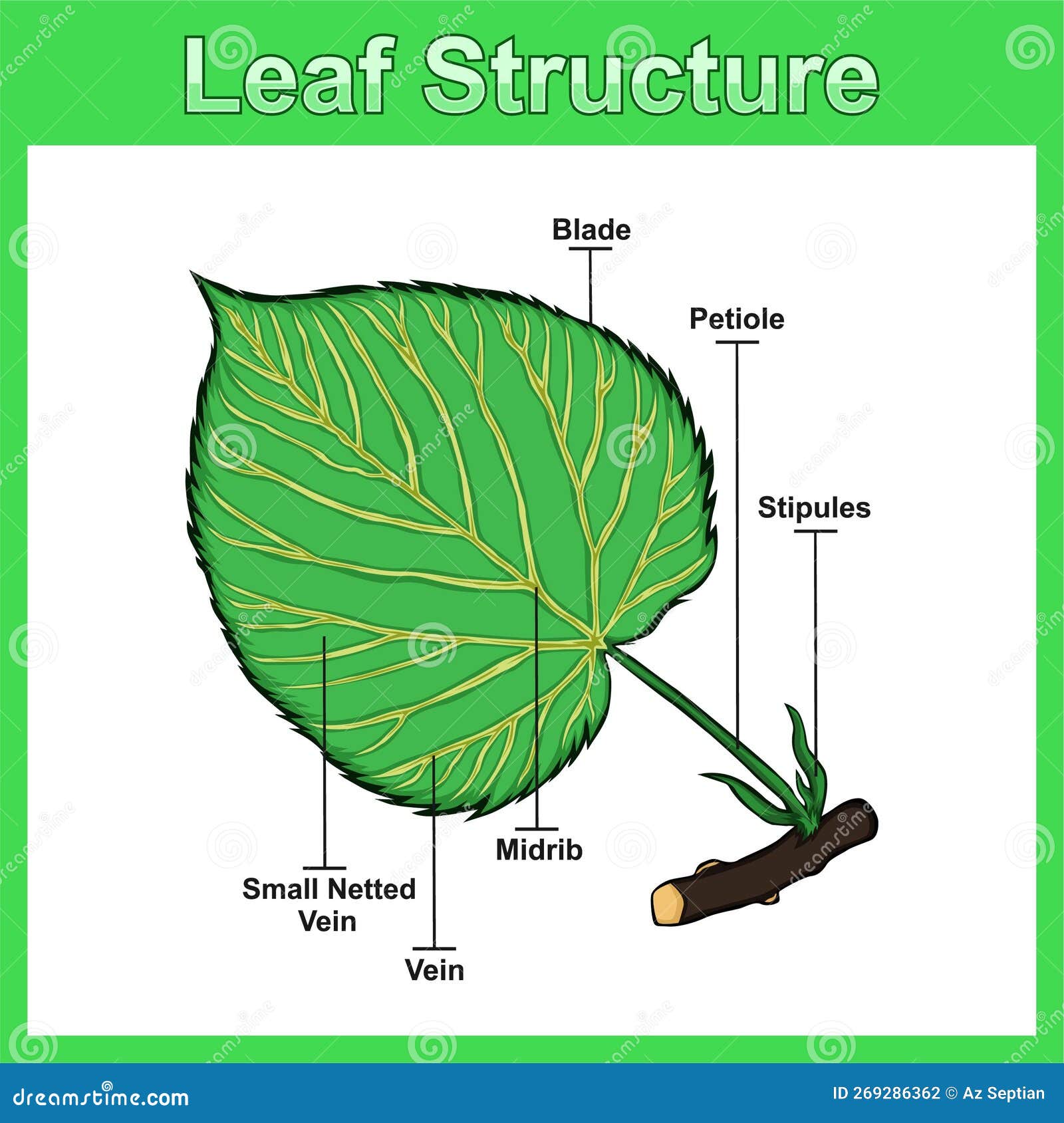
Leaf Structure Diagram, Structure Leaf Vector Illustration. Stock Vector Illustration of
Figure 30.8.1 30.8. 1: Parts of a leaf: A leaf may seem simple in appearance, but it is a highly-efficient structure. Petioles, stipules, veins, and a midrib are all essential structures of a leaf. Within each leaf, the vascular tissue forms veins. The arrangement of veins in a leaf is called the venation pattern.

Leaf Structures & Functions YouTube
The table below describes the different structures in a leaf and their functions; Leaf Structures Table. Diagram showing the cross-section of a leaf. The specialised cells in leaves have adaptive features which allow them to carry out a particular function in the plant;. 6.2.3 Structure of the Leaf; 6.2.4 Living in Extreme Conditions;
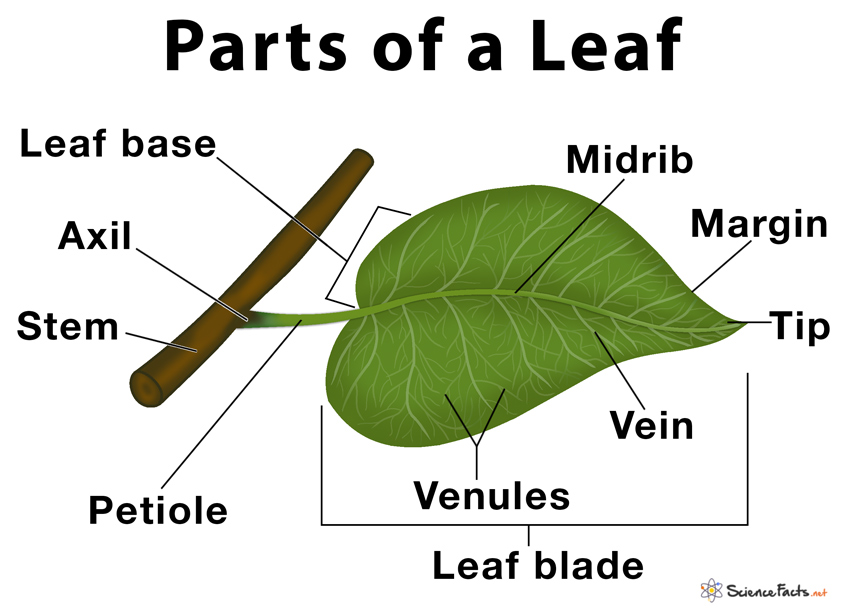
25+ Label The Parts Of Leaf AntoniusNeiko
The structure of a leaf has adaptations so that it can carry out photosynthesis close photosynthesis A chemical process used by plants to make glucose and oxygen from carbon dioxide and water.